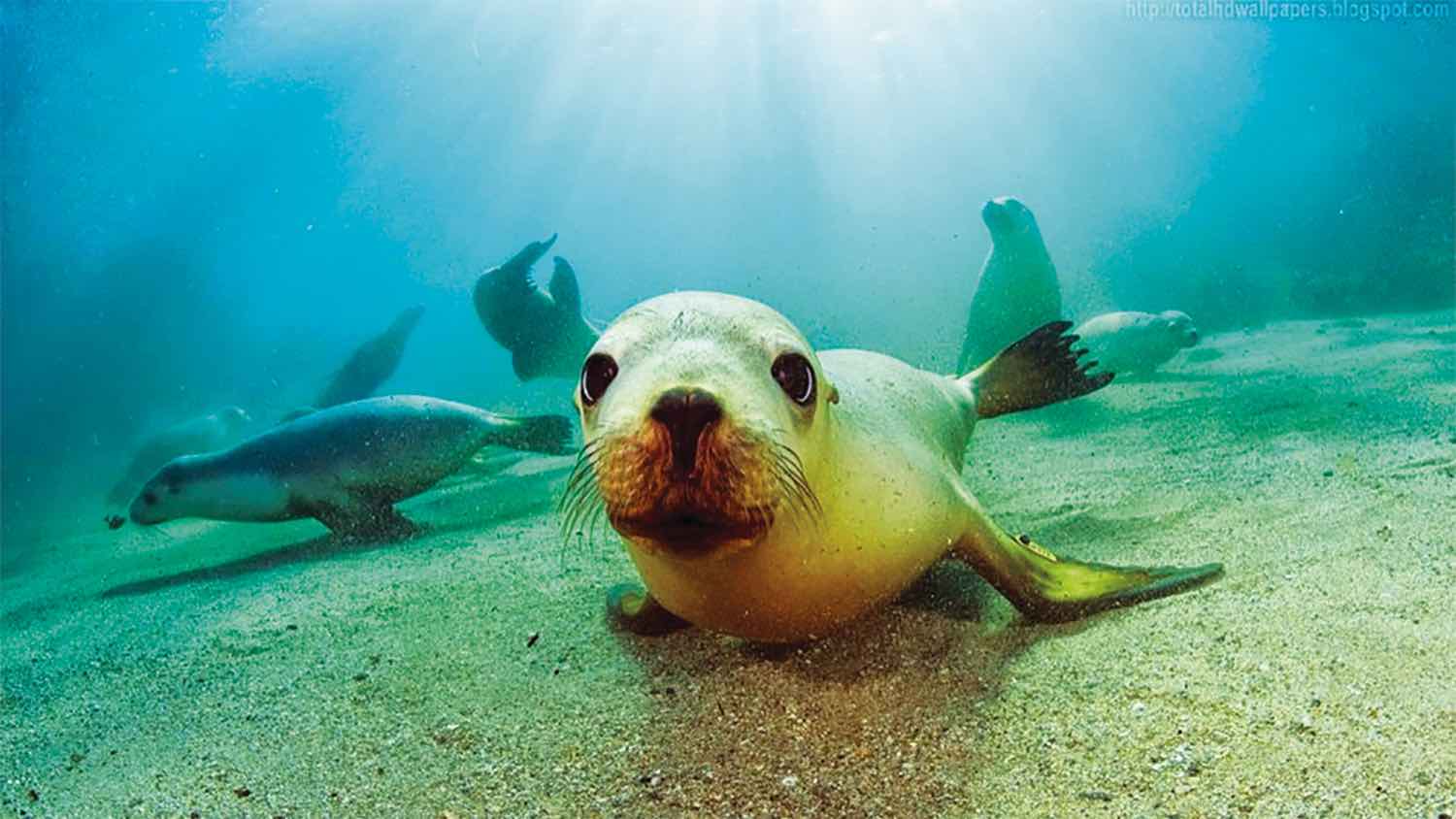[page_title]
[post_date]
By Katia Silva Marine Biologist and Guide at Cabo Trek.
California sea lions live in shallow waters of the eastern North Pacific Ocean in the coastal waters and on beaches, docks, buoys, and jetties. They are playful, intelligent, and very vocal (sounding like barking dogs). Like all marine mammals, they are protected under the Marine Mammal Protection Act (MMPA). Their population has been increasing since at least 1975, after protections were put in place under the MMPA.
Adult females and juveniles are slender-bodied and are blonde to tan in color. Adult males are generally larger than females and are mostly dark brown to black in color. Pups are dark brown at birth and weigh about 16 pounds. When pups are 4 to 5 months old, they molt their dark brown coats for light brown or silver coats.
California sea lions have broad front flippers and long, narrow snouts. Subadult and adult males have pronounced forehead crests crowned with tufts of blonde or lighter hair. California sea lions have visible ear flaps, and three to five claws on their hind flippers. They feed mainly offshore in coastal areas and eat a variety of prey—such as squid, anchovies, mackerel, rockfish, and sardines—found in upwelling areas. They also may take fish from commercial fishing gear, sport fishing lines, and fish passage facilities at dams and rivers.
They are very social on land and in the water, but during the breeding season the males aggressively defend their territories and females fight other females to protect their pups.
California sea lion males bark like dogs to communicate with other males and females. Females and pups communicate using vocalizations that are unique to the female and pup. Each pup and female has a unique scent that also identifies them. A female can locate her pup among hundreds of others by her pup’s vocalization. When she finds her pup, she smells it as a final check.
One common behavior called “rafting” is when they hold their flippers above the water for a long time, motionless, to rest and regulate their body temperature. Especially in the next months when the temperature of the water starts to get warmer.
Feeding or trying to feed them is harmful and illegal, because it changes their natural behaviors and makes them less wary of people and vessels.
The opportunity to swim, snorkel and dive with sea lions in La Paz and Cabo San Lucas is unique and amazing! More than 400 sea lions call the Sea of Cortez home. You’ll find playful animals on most dives in the area
[rev_slider alias=»footer-ads»]



